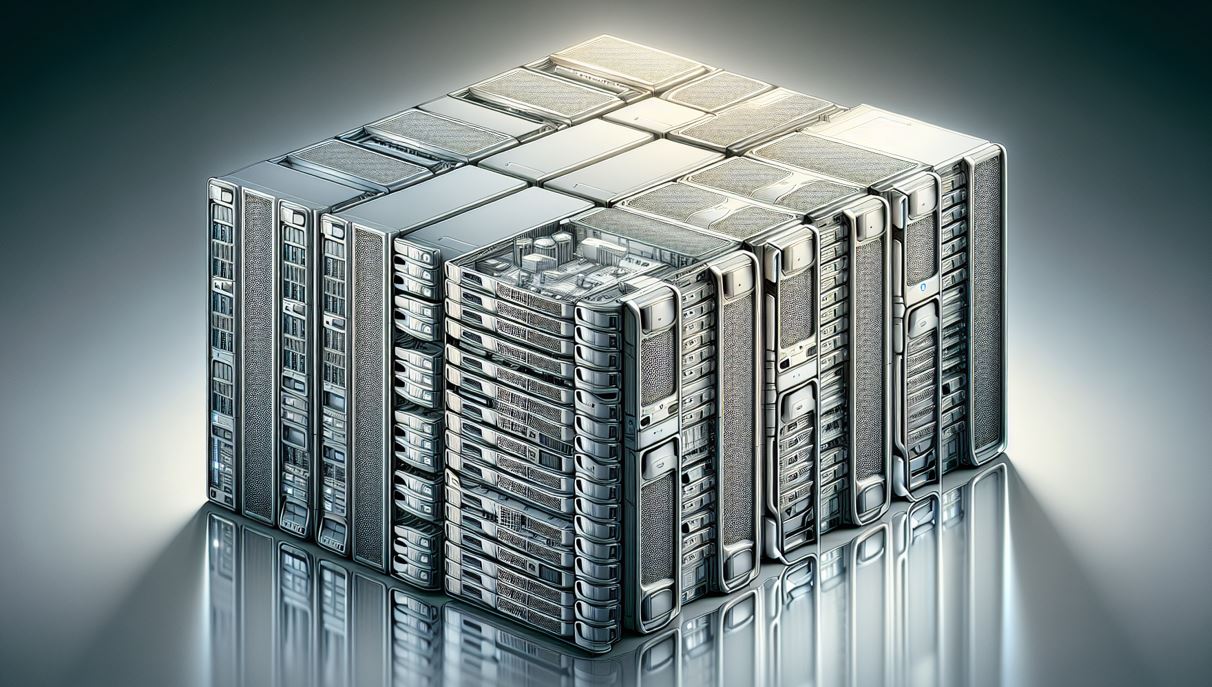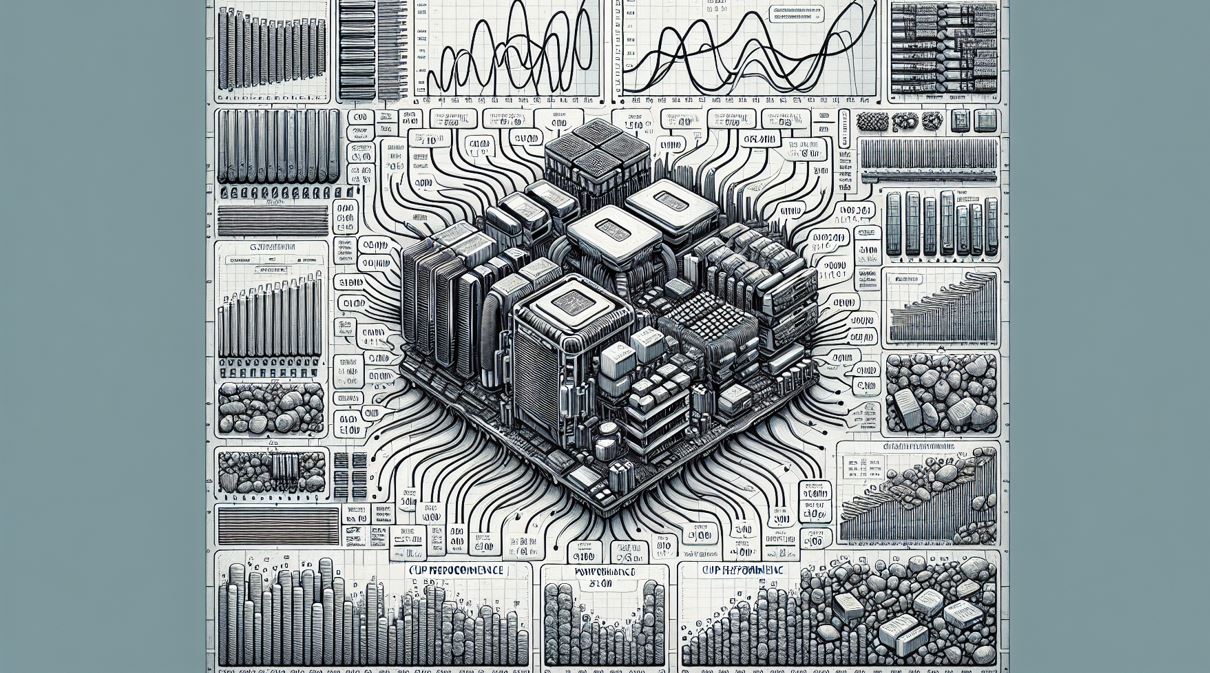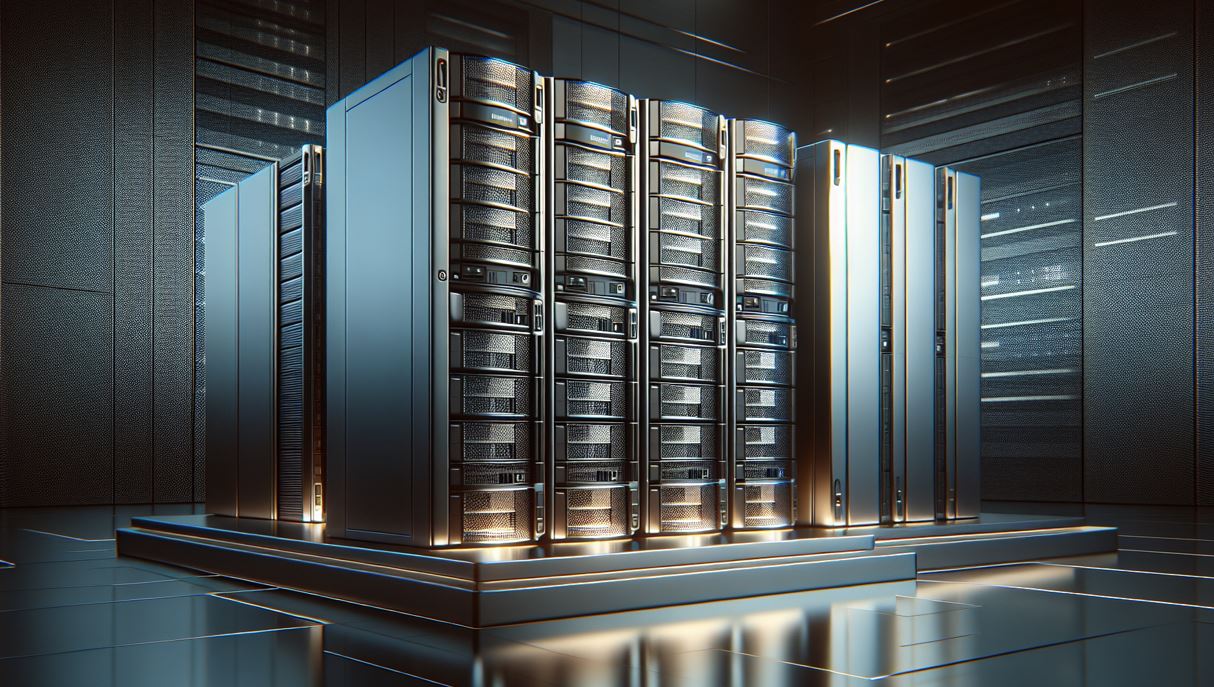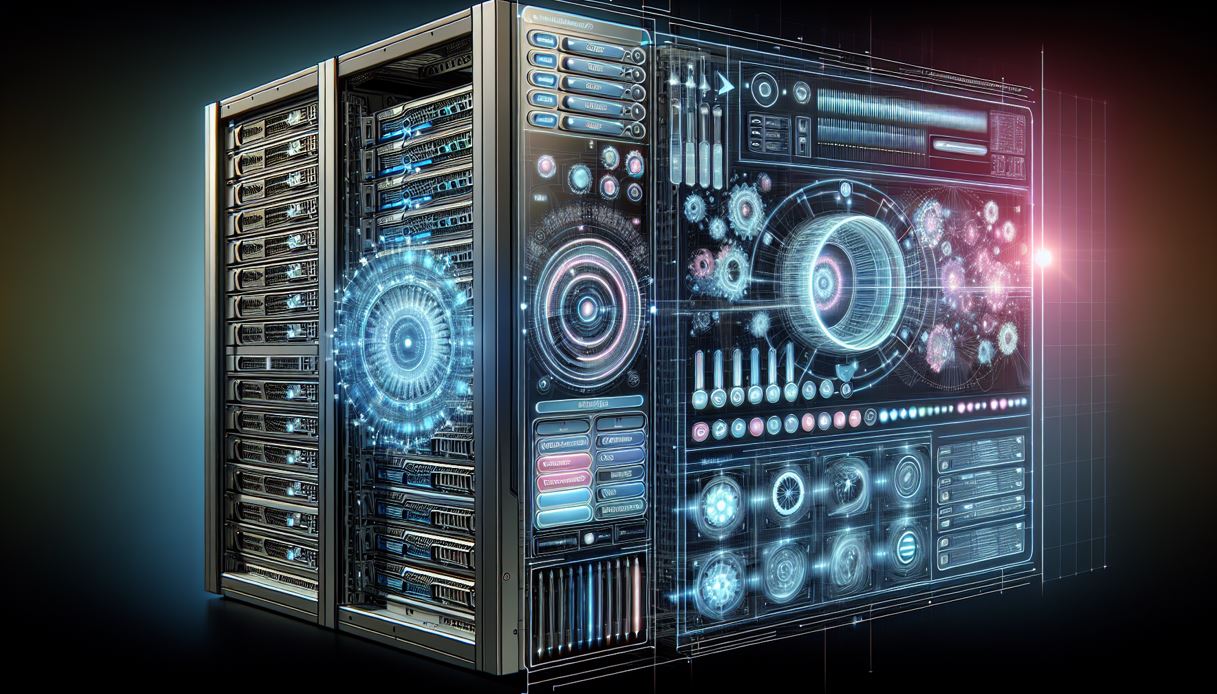Dell PowerEdge R250 vs R350 vs R450 Rack Mount Server: Choosing the Best Fit for Your Data Center
Deciding on a Dell PowerEdge server? This comparison between the dell poweredge r250 vs r350 vs r450 rack mount server models cuts through the clutter to help you pinpoint which aligns with your data center needs. We delve into the essentials for small business setups, scalability for growing operations, and the high-performance features suited for demanding enterprise environments. Find out which server has the right combination of power, flexibility, and value for your IT infrastructure.
SourceIT is a Dell EMC Authorized Reseller in Singapore, offering Dell EMC’s full line-up of products such as Dell EMC Server, Dell EMC Storage, Dell Networking, Dell Software, Dell Consulting Services Solution.
Key Takeaways
-
The Dell PowerEdge R250, R350, and R450 models are tailored for various business sizes and needs, with the entry-level R250 suitable for small businesses, the R350 for growing mid-sized businesses, and the R450 for large enterprises with high-performance requirements.
-
Each server has distinct specifications and performance capabilities; the R250 is designed for affordability, the R350 offers scalable performance, and the R450 provides advanced features for data-intensive tasks with the latest Intel Xeon Scalable processors and extensive memory and storage options.
-
Dell PowerEdge servers focus on operational efficiency, with features like energy-saving designs, comprehensive management tools like iDRAC9, robust security measures, and a range of support services, ensuring businesses can future-proof their IT environments.
Exploring the Dell PowerEdge Rack Server Lineup: R250, R350, and R450

The Dell PowerEdge series has long been the backbone of modern data centers, offering a range of solutions that adapt to any workload or business size. From the compact PowerEdge R250 to the formidable R450, these rack servers are designed to tackle traditional applications, virtualization, and even cloud-native workloads with ease. Each model boasts tailored compute, networking, and storage modules, not to mention robust security measures that keep your data under lock and key.
As we delve into the specifics of the R250, R350, and R450, you’ll come to understand how Dell’s dedication to modular infrastructure is reshaping the landscape of data center operations, especially at the edge.
PowerEdge R250: The Entry-Level Workhorse
For the small business owner or the remote office manager, space and budget are often at a premium. Enter the PowerEdge R250, the entry-level workhorse that doesn’t skimp on performance despite its affordability. This compact 1U chassis powerhouse is equipped with Intel Xeon E-2300 series processors, making it an ideal fit for businesses with limited space that still require a server that packs a punch.
Even for the most budget-conscious, the R250 offers configurations with an Intel Pentium processor, an economic choice that supports essential tasks without the frills. However, it’s worth noting that opting for the Pentium may limit performance and scalability for certain applications due to the memory speed constraints.
PowerEdge R350: The Scalable Performer
As a business grows, so does its need for a server that can keep pace. The PowerEdge R350 is that scalable performer, poised to support small businesses as they transition into handling enterprise-class workloads. The R350 steps up the game with improved processor options and expanded memory capacity, necessary for applications that eat up a lot of memory.
It’s also a leap forward in storage solutions, offering double the capacity of the R250, ensuring that a growing business’s data needs are well-accommodated. It’s a server that not only meets current needs but also anticipates future growth.
PowerEdge R450: Advanced Features for Demanding Workloads
Larger enterprises with demanding high-performance computing needs will find a strong ally in the PowerEdge R450. This server doesn’t just perform; it excels, thanks to the advanced 3rd generation Intel Xeon Scalable processors designed to tackle data-intensive applications.
With a maximum of 16 DDR4 DIMM slots, the R450 is a behemoth when it comes to memory bandwidth, supporting larger-scale operations and demanding applications that smaller servers can’t handle. It’s the ideal candidate for general-purpose IT needs, high-performance computing, and lightweight virtualization, delivering power where it’s needed the most.
Key Specifications Compared: R250 vs R350 vs R450

When deciding between the PowerEdge R250, R350, and R450, you’ll want to weigh their CPU performance, memory and storage options, and their expansion capabilities. Each model has been engineered with specific use cases in mind, so understanding these key differences is paramount in selecting the server that aligns with your business requirements.
Whether you prioritize raw computing power, extensive memory, or the ability to grow your server’s capabilities over time, this comparison will shed light on which PowerEdge server is your best fit.
CPU and Performance
At the heart of every server is its CPU, dictating performance and, subsequently, the workloads it can handle. The PowerEdge R250, R350, and R450 all harness the power of Intel Xeon processors, but to different extents. The R250’s Intel Xeon E-2300 series processors offer essential performance features, ideal for small businesses.
The R350 steps up with increased performance and memory speed, thanks to the same Intel Xeon E-2300 processors, well-suited for expanding businesses. However, the R450 is in a league of its own, supporting the latest Intel Xeon Scalable Processors and providing significant improvements in processing power, ideal for data-intensive applications.
Performance testing has demonstrated that the R350 with the latest Intel Xeon processors outperforms the older R340, underscoring the advancements made in the PowerEdge line.
Memory and Storage Options
Memory and storage are the backbone of any server, as they determine how much data can be processed and stored. The PowerEdge R350, for instance, has a maximum memory capacity of 128GB, supporting up to four DDR4 UDIMMs at 3200 MT/s. This newer generation of DIMMs even doubles the capacity per module compared to its predecessors.
For storage, the flexibility and security of hot-plug drives along with RAID configurations mean the R350 can adapt to any business’s evolving needs. With a variety of storage options including hot swap and cabled SAS/SATA drives, Dell PowerEdge servers are equipped to handle the complexities of modern data storage.
Expansion and Scalability
As businesses evolve, so must their IT infrastructure. The R350 and R450 make this transition smooth with improved expansion capabilities. The R350, for example, includes three PCIe Gen 4 slots, doubling the data transfer rate per lane from previous generations, which significantly enhances both scalability and performance.
These slots include a x16 slot, a x8 low-profile half height half-length slot, and a dedicated slot for a PowerEdge RAID Controller, providing ample expansion opportunities for various needs.
Design and Build Quality: Compact Powerhouses

The PowerEdge R250 and R350 are epitomes of Dell’s commitment to robust build quality and efficient design, making them suitable for the rigorous demands of data center environments. Each model is meticulously engineered with a focus on space efficiency and hardware organization, which is evident in the R450’s well-organized layout featuring status LEDs and information tags to simplify maintenance and component tracking.
This attention to detail ensures that these servers not only perform reliably under pressure but also occupy a minimal footprint in your data center.
Chassis and Cooling Efficiency
An efficient cooling system is critical in maintaining server performance and longevity. The PowerEdge R250, for instance, incorporates up to three fixed system fans and an optional PCI Express fan slot, contributing to its effective thermal management. The R350’s cooling solution features four cold-swap, dual-rotor fan modules strategically placed to ensure the server operates at peak performance.
Even the PowerEdge R450 offers a selection between STD and SLVR cooling fans, providing the flexibility needed to meet high performance cooling requirements. These servers are designed to maintain operational temperatures in a range of conditions, ensuring reliability and efficiency.
Hardware Accessibility and Management
Ease of maintenance is a key factor in server management, and Dell PowerEdge servers excel in this area. The R250 and R350, for instance, feature easy-to-remove side panels and clear interior labeling, making hardware accessibility a breeze. Although the more compact design of the R450 may pose a slight challenge, its tool-less design facilitates quick component upgrades and replacements, which contributes to a lower total cost of ownership.
Additionally, the hot-plug drive bays in the R350 and R450 support rapid replacement and expansion, allowing for server management with minimal downtime.
Systems Management and Automation Features

In the realm of server management and automation, Dell PowerEdge servers stand out with their comprehensive suite of features. The Integrated Dell Remote Access Controller 9 (iDRAC9) offers server management through intuitive interfaces, while OpenManage Enterprise centralizes control, elevating the efficiency of IT operations.
These systems, functioning as an operating system, not only streamline firmware updates and server settings configuration but also minimize the chances of human error through automation.
Remote Monitoring and Control
iDRAC9 transforms server management by enabling IT administrators to:
-
Keep a watchful eye over server components from anywhere
-
Receive predictive failure alerts
-
Have comprehensive power control
-
Use Serial Over LAN capabilities to monitor and control servers with precision.
With a dedicated NIC for reliable connectivity, iDRAC9 supports health monitoring with status LEDs, making it a vital asset for proactive server management. The addition of diagnostic and logging tools within iDRAC9 further empowers administrators to maintain peak server performance.
Simplifying Routine Tasks
The beauty of iDRAC9 lies not only in its monitoring capabilities but also in its role in automating routine server management tasks. With iDRAC9, you can:
-
Perform routine deployments of configurations and updates remotely
-
Vastly simplify the day-to-day operations of an IT department
-
Reduce manual labor and error
Security Measures: Ensuring Data Protection

Security is a top priority for any data center, and Dell PowerEdge servers deliver on this front with an array of robust measures. From iDRAC9’s silicon root of trust and signed firmware to secure default passwords, the R250, R350, and R450 are fortified against unauthorized access and threats.
With features dedicated to cybersecurity, anomaly discovery, and interfaces for ITSM/automation that ensure cryptographically verified hardware integrity, these tower servers are designed to proactively shield your data from vulnerabilities.
Hardware and Firmware Integrity
Maintaining the integrity of hardware and firmware is essential to server security. The PowerEdge series takes a stringent approach, allowing only authorized firmware updates and secure boot options to prevent tampering and unauthorized changes.
The R250, for example, employs authorized firmware to safeguard data security, while the R350’s use of Intel Software Guard Extensions creates secure memory environments, fortifying sensitive data and aiding in threat detection.
Proactive Threat Detection
Proactive threat detection is another layer of security that PowerEdge servers offer. The R350’s UEFI Secure Boot ensures that only trusted software boots up, protecting against boot-level threats and unauthorized firmware changes.
Dell PowerEdge servers, including the R250 and R450, incorporate advanced cybersecurity measures designed to detect and prevent potential security threats before they can do harm.
Cost-Efficiency and Energy Consumption
Operational cost savings and a reduced environmental footprint are significant benefits of the Dell PowerEdge server line. Advances in engineering have led to an 83% decrease in energy intensity since 2013, showcasing Dell’s progress in power efficiency and the impact of dell emc technology.
This reduction in power consumption is not only good for the planet but also for your bottom line, offering long-term cost savings through lower energy bills.
Reducing Operational Expenses
Operational expenses can weigh heavily on any business, but PowerEdge servers are designed to lighten that load. The R250, for instance, offers a variety of PSU options to match different energy needs, ranging from the 450W Bronze to the 700W Titanium AC and DC options. The R350’s Single 600W AC Redundant Platinum PSU exemplifies high energy efficiency, contributing to the overall cost-effectiveness of the server.
With the ability to operate with 32% less energy and requiring fewer servers, PowerEdge servers can significantly reduce total cost of ownership.
Eco-Friendly Operations
In today’s world, businesses are increasingly conscious of their carbon footprint, and Dell’s PowerEdge servers align perfectly with this eco-friendly ethos. PowerEdge servers are not just powerhouses of performance but also pioneers in energy-efficient operations, assisting businesses in identifying idle servers and optimizing energy use.
The software’s ability to report on CO2 emissions and support environmentally responsible data centers is a testament to Dell’s commitment to sustainability, which goes hand-in-hand with operational efficiency.
Ideal Use Cases for Each Model
When assessing the PowerEdge R250, R350, and R450, it’s crucial to consider the environments in which they’ll thrive. Here’s a breakdown of each model:
-
The R250 is a beacon of affordability for small businesses with limited IT requirements.
-
The R350 strikes a balance between capacity and performance, ideal for mid-size businesses on the rise.
-
The R450, with its advanced features and superior expansion capabilities, caters to the demanding needs of large enterprises.
Each model is engineered to excel in specific scenarios, ensuring that there’s a PowerEdge server that’s just right for your business’s unique challenges.
Small Business Solutions
The Dell PowerEdge R250 is a cost-effective champion for small businesses that require a reliable server solution without the complexities of larger models. It provides robust computation power for essential applications like web hosting and file sharing, which are the lifelines of small businesses.
The R250’s features include:
-
Ability to support light virtualization
-
IT infrastructure consolidation
-
High data availability
-
Entry-level rackmount server
This makes it a smart choice for small companies looking to secure high data availability with an entry-level rackmount server.
Mid-Size Business Growth
For mid-size businesses charting a course towards growth, the PowerEdge R350 stands ready to support their journey. Its compact design and quiet operation make it a versatile choice, suitable for a variety of settings from storefronts to open office spaces.
The R350’s ability to handle applications critical to business success, such as virtualization, data processing, and private cloud environments, positions it as a key asset in the expansion of a mid-size company.
Enterprise-Level Demands
For the larger enterprise, the PowerEdge R450 is engineered to meet the most demanding high-performance computing needs. Its support for Intel Xeon Scalable processors guarantees the processing power required for complex computational tasks. The scalability of up to 24 DIMMs of RAM and NVMe drives ensures that big data analytics and memory-intensive applications are handled with ease.
Moreover, the R450’s high-speed networking options facilitate accelerated data processing and connectivity, making it a powerhouse for enterprise systems that demand top-tier performance.
Upgrading and Future-Proofing Your Server Environment
Investing in the right server is about more than meeting today’s needs—it’s about preparing for tomorrow’s challenges. With Dell Technologies’ comprehensive support services, such as technology rotation and subscription services, businesses have the flexibility to adapt and grow.
The PowerEdge line is built with the future in mind, ensuring that as your business evolves, your server environment can scale and upgrade in step, securing your IT investments for years to come.
Summary
Selecting the right server is a pivotal decision for any business, and the Dell PowerEdge R250, R350, and R450 offer a spectrum of solutions to fit a range of data center needs. From the entry-level R250, perfect for small businesses, to the scalable R350 for growing companies, and the high-performance R450 for enterprise-level demands, each server brings its unique strengths to the table. By weighing the specifications, design quality, management features, security measures, and cost-efficiency of each model, businesses can make an informed choice that aligns with their current requirements and future aspirations.
Frequently Asked Questions
What makes the PowerEdge R250 ideal for small businesses?
The PowerEdge R250 is ideal for small businesses due to its affordable price, robust computation power, and support for light virtualization, making it suitable for essential business applications. It is designed to meet the limited space and IT demands of small businesses, while also enabling IT infrastructure consolidation.
How does the PowerEdge R350 support mid-size business growth?
The PowerEdge R350 supports mid-size business growth by providing increased performance and storage capacity compared to the R250, making it suitable for scaling businesses and optimized for diverse environments. This makes it an ideal choice for handling enterprise-class workloads vital to business expansion.
What are the key benefits of the PowerEdge R450 for larger enterprises?
The PowerEdge R450 offers advanced features like Intel Xeon Scalable processors and extensive memory bandwidth, making it ideal for high-performance computing needs and capable of handling complex workloads and big data analytics for larger enterprises.
Can the PowerEdge servers help reduce operational expenses?
Yes, PowerEdge servers are designed with energy efficiency in mind, offering various power supply options and cooling solutions to lower energy consumption, leading to operational cost savings.
How do Dell PowerEdge servers ensure data security?
Dell PowerEdge servers ensure data security through features such as iDRAC9 with silicon root of trust, signed firmware, and secure default passwords, which proactively detect threats and maintain hardware and firmware integrity to protect against vulnerabilities.


